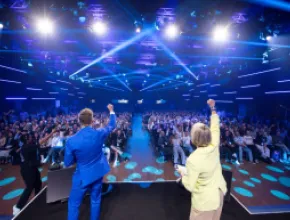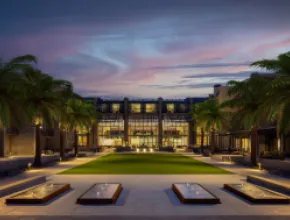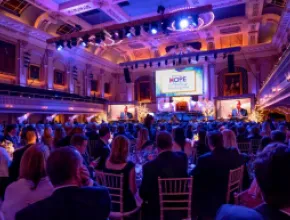Kuala Lumpur, this largest city in Malaysia, is a truly cosmopolitan center, boasting a population of approximately 1.8 million people. Its population--consisting of Chinese, Malays, South Indians, east Malaysian ethnic groups, Thais, Indonesians, Sikhs, and a large group of expats--offers visitors a mix of traditions, cuisine, fashion, and architecture, making Kuala Lumpur a nonstop feast for the eyes as well as all the other senses.
Today, there are three main meeting areas in the capital. Attendees can easily reach each one by taxi from the Kuala Lumpur International Airport, located 47 miles south of the city center at Sepang.
Located in the heart of the city, the Putra World Trade Centre (PWTC) has a total of 263,000 square feet of event exhibition space in three exhibition halls, 17 meeting rooms, a press conference room, and VIP suites.
Within minutes of the well-known Petronas Twin Towers—the 88-story landmark that was once the world’s tallest structure—is the Kuala Lumpur Convention Centre. Host of PATA’s Travel Mart 2005, this venue boasts 104,000 square feet of meeting space in the exhibition hall alone. Planners can use the on-site aquarium for a memorable reception.
Just 15 miles south, Putrajaya, the new federal administrative center of Malaysia, is rapidly becoming a major business center. The city is home to the Putrajaya International Convention Centre (PICC). With 1.3 million square feet of exhibition space spread over nine levels, the center accommodates large and small gatherings alike. Depending on their needs, planners can choose among the numerous halls, galleries or suites on tap here.
When it comes to sights and attractions, Kuala Lumpur doesn’t disappoint. Not to be missed is a kayak ride on the lake where delegates can see the Putra Mosque, a glorious pink-domed structure made with rose-tinted granite.
For a bit of history, attendees can head to Merdeka Square. Meaning “Independence Square,” this is where the Union Jack was lowered on Aug. 31, 1957. This signified the end of British colonial rule and is celebrated every year with parades and festivities. Today, a Malaysian flag proudly flaps 328 feet above the ground.
The Padang is a beautifully landscaped square that offers great views of the city skyline. Overlooking the square is the Selangor Club. Dating to 1890, this mock-Tudor structure was once a watering hole for the city’s high society. On the other side of the square is the Sultan Abdul Samad building, which housed administrative departments during British rule.
Early risers may spot locals practice tai chi at Taman Tasik Perdana, most often referred to as Lake Gardens. This is the oldest and most popular park in Kuala Lumpur. It includes a bird and a butterfly aviary, as well as a deer park and an orchid garden.
Before the modern shopping centers existed, there was Jalan Tuanku Abdul Rahman, a stretch of pre-war buildings owned by local retailers. Nowadays, in addition to these well-preserved buildings, shoppers can stock up on souvenirs at the Sogo Shopping Complex and Maju Junction Mall.
If guests are lucky enough to be in Kuala Lumpur on a Saturday evening, they shouldn’t miss the Lorong Tuanku Abdul Rahman night market. Starting in the late afternoon, the area is closed to traffic and traders and hawkers come out to sell their goods. This is a great place to sample Malaysian delicacies and pick up some local products.
The flavors of the cuisine in Kuala Lumpur are as varied as the population. Malaysian favorites include nasi lemak, coconut milk served with rice, fried anchovies, sliced cucumbers, curried squid, and an egg. Attendees can also snack on barbecued chicken and beef skewers served with sliced cucumbers, onions and peanut sauce.
Whatever neighborhood of Kuala Lumpur delegates visit, they’re bound to find a welcoming international mix of people. And, with the World Economic Forum recognizing that Malaysia is one of the most economical countries for tourism--and among the safest and most developed--the secret is out: Kuala Lumpur, a fusion of flavors, is the place to be.





